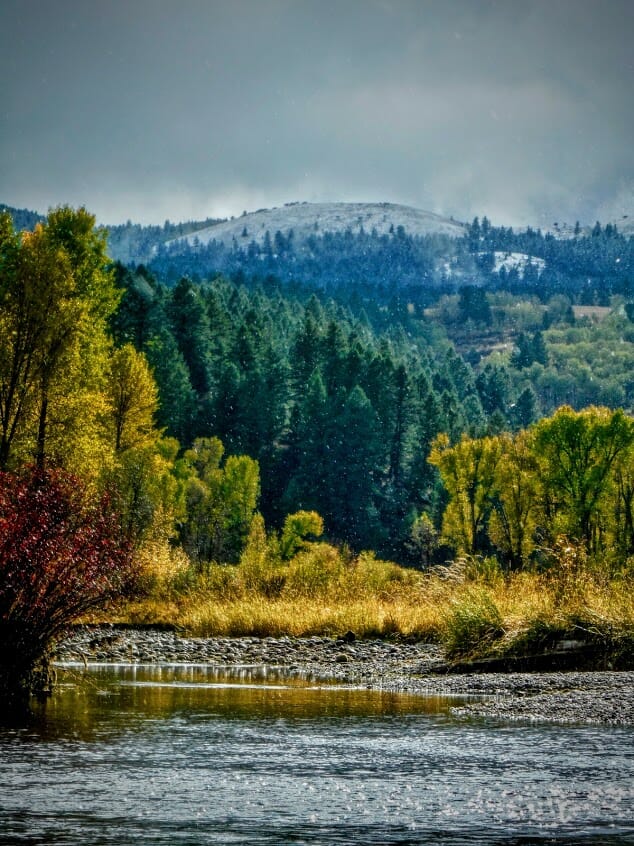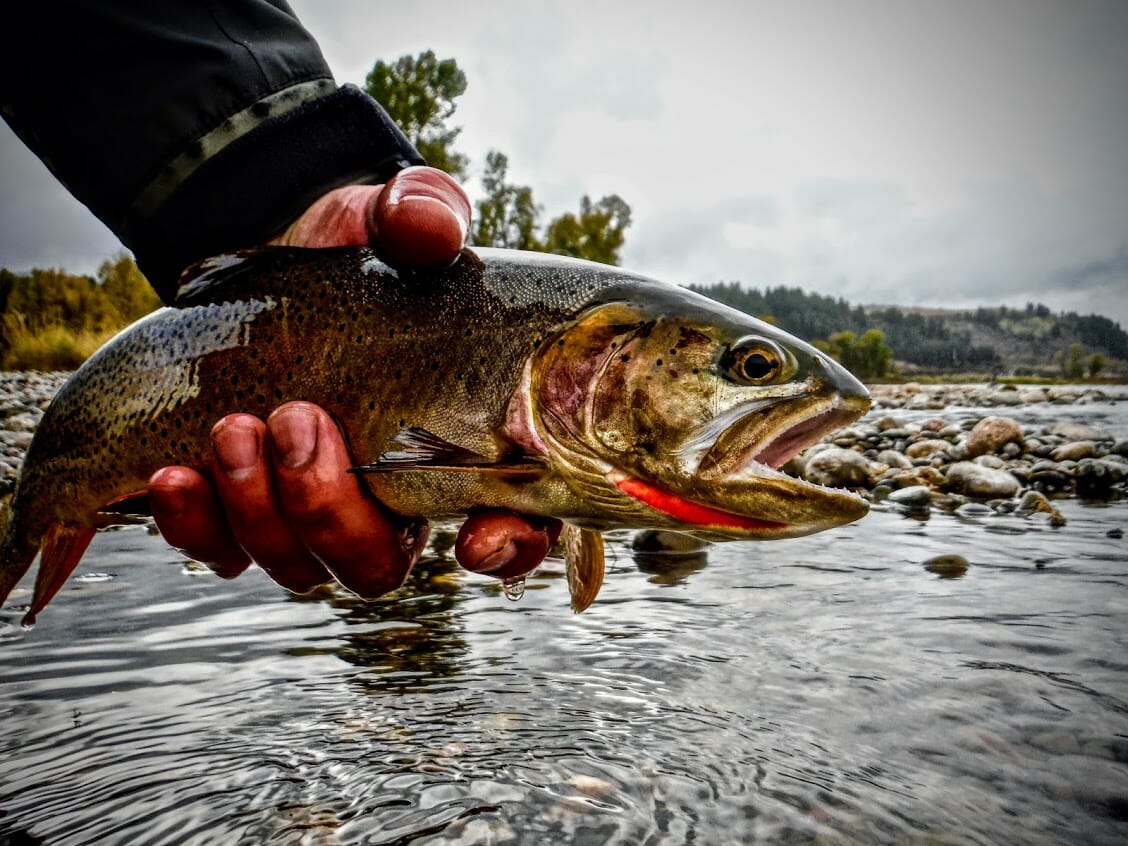If the determining factor in the effort to save the native Yellowstone cutthroat trout of Idaho’s South Fork of the Snake River is how hard cutthroats fight at the end of a leader … well, then, the fight is already lost.
The perception that introduced rainbows—spawned from mongrel strains engineered in hatcheries over decades—offer anglers a better “fight” than their native cutthroat counterparts might prove to be the deciding factor in the ongoing cutthroat conservation effort on this iconic Western river. Despite years of determined effort by the Idaho Department of Fish and Game to educate anglers on the need to protect the native fish by harvesting rainbows from the South Fork, invasive rainbows still outnumber native cutthroat 2 to 1. And the ratio grows with every rainbow or fertile hybrid that spawns with a native cutthroat.
And that’s because many anglers—and, honestly, many guides—are reluctant to harvest a wild trout, regardless of the flavor. There’s a fundamental disconnect that’s been brought on by an effective catch-and-release campaign that has likely worked too well, at least in terms of native fish protection and recovery. We need to hammer a simple message home: killing non-native fish to protect native fish is a good thing.
And, in the case of the South Fork, there’s one thing all anglers—and outfitters and guides—need to keep in mind. The fish that made the South Fork famous weren’t rainbows or their fertile rainbow-cutthroat hybrids. The fish that made the South Fork the iconic river it is today are the native cutthroats that always seem to be looking up, always seem to be willing to hit a dry fly and, contrary to the popular notion that says otherwise, fight just fine at the end of a stretch of mono.
Here’s an excerpt from a 2019 article in the Post-Register here in Idaho Falls, regarding Fish and Game’s efforts to remove rainbows from the river:
“The vigorous fight of a rainbow makes more memories than the slow jerk of a cutthroat …”
We’re our own worst enemy in the effort to protect our native trout. And why? Because rainbows are just more fun?
The “slow jerk of a cutthroat?” Spare me.
We’re not growing native cutthroat trout habitat on trees, and things aren’t getting consistently better in their existing habitat. Where habitat exists, these fish should be priority targets for protection and restoration—good for Idaho Fish and Game for keeping up the fight.
The “I like rainbows because they fight harder” excuse has no place in the discussion. The argument that angling clients like rainbows more, and therefore shell out more money in outfitted trips and guide tips, rings hollow. I get that there’s a fishing economy on the South Fork—I’ve been a part of it for 20 years. But forgetting the native trout that built the river’s reputation is irresponsible. At some point, doing the right thing becomes more important than “the vigorous fight of a rainbow.” Educating anglers on the importance of protecting native trout should take precedence over how one protests its entanglement versus another (and remember this—anglers can catch and enjoy the marvels of rainbows at the end of a line and still keep a few for dinner).
The South Fork is one of the last big-water refuges for native Yellowstone cutthroat trout left in the fish’s native range. Yellowstone Lake—by now, we’re all familiar with the plight those fish are up against—is a shadow of its former self. The Yellowstone River through Paradise Valley saw a parasite take out 10,000 native whitefish two summers ago thanks to an algae bloom brought on by progressively warmer temperatures and drought-induced low water (that same summer, a modest whitefish kill happened on the South Fork due to the same parasite). We’re not growing native cutthroat trout habitat on trees, and things aren’t getting consistently better in their existing habitat. Where habitat exists, these fish should be priority targets for protection and restoration—good for Idaho Fish and Game for keeping up the fight.
And all is not lost, thanks in large part to Fish and Game and its willingness to face the political headwinds on the South Fork. For years now, the department has managed a series of weirs on the river’s spawning tributaries—these small streams are where big fish go to make little fish. By sorting out the rainbows from the native cutthroats that are swimming up the tribs to spawn, Fish and Game is giving the native trout a fighting chance to remain a part of the South Fork’s tapestry. It’s also important to note that, over the last two decades, Trout Unlimited has reconnected several South Fork tributaries to the river, giving migrating fish more spawning and rearing habitat.

And, just in case there’s some notion that the rainbows that are captured as they run up the small streams to spawn with the native cutthroats are killed, know that the department relocates those fish to the kids’ fishing pond outside of the town of Victor, Idaho, where the hope is that they’re caught and harvested by young anglers.
But real progress in the effort to control the numbers of invasive rainbows in the South Fork must be made by those who fish. It’s a tough call, to keep a wild trout for the grill or the smoker. I get it. I grew up releasing nearly every trout I caught, adhering to the mantra that all trout are too precious to be caught just once.
But, for the sake of a species, it’s time to revisit this crafty slogan. Don’t think the rainbows will eventually take over the river? For the answer to that question, simply visit almost any other storied trout river in the American West. When’s the last time anyone caught a cutthroat on the Roaring Fork or the Colorado? Or the Big Hole? The Beaverhead? If you catch a cutthroat in the nearby Henry’s Fork, you should stop on the way home and buy some scratch tickets, because that’s about how lucky you are.
Catch all the rainbows you want on the South Fork. But, please, kill them and eat them. And do it for the fish that made the river famous.



